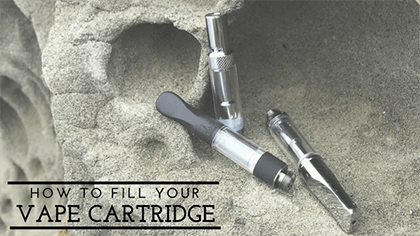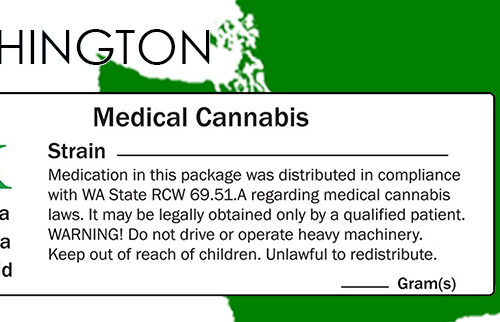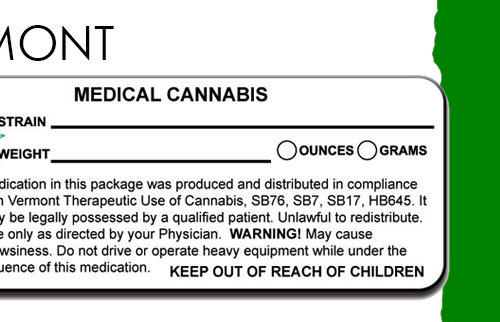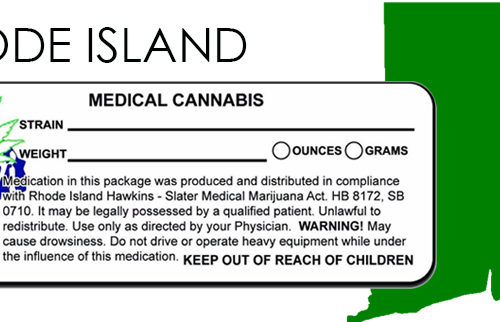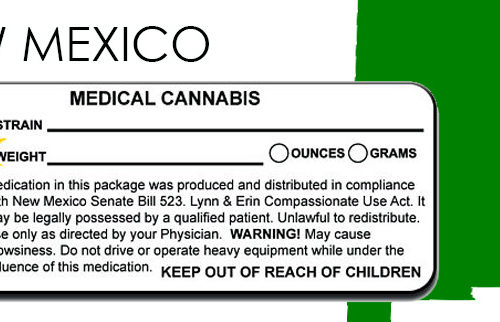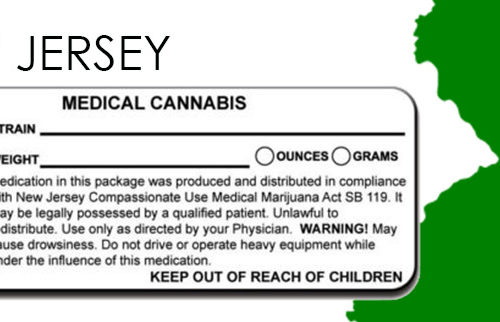No products in the cart.
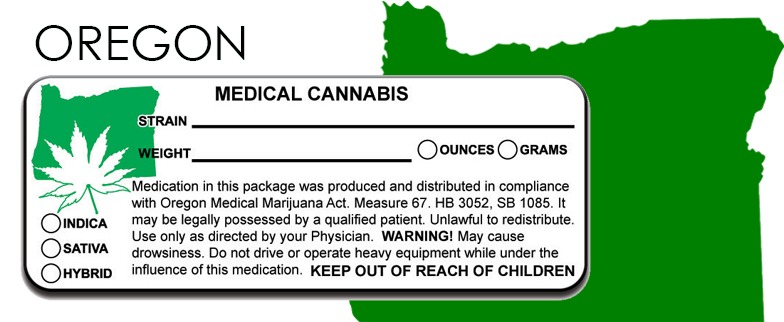
OREGON Packaging and Labeling State Law
Oregon’s labeling and packaging guidelines fall under 333-007-0010 Labeling and include the following:
333-007-0030 Marijuana Plant Labeling Requirements Prior to a marijuana plant being sold or transferred to a consumer, patient or designated primary caregiver a tag or label must be affixed to the plant or plant container that has the following information:
(1) Producer’s business or trade name and licensee or registrant number; (2) Business or trade name of licensee or registrant that packaged or distributed the product, if different from the producer; (3) Name of the strain; and (4) Universal symbol. Marijuana Seed Labeling Requirements Prior to marijuana seeds being sold or transferred to a consumer, patient or designated primary caregiver the container holding the seeds must have a label that has the following information: (1) Producer’s business or trade name and licensee or registrant number; (2) Business or trade name of licensee or registrant that packaged or distributed the product, if different from the producer; (3) Name of the strain of seed;(4) Date of harvest; (5) Number of seeds or net weight in U.S. customary and metric units as appropriate; and (6) Universal symbol. Usable Marijuana Labeling Requirements Prior to usable marijuana being sold or transferred to a consumer, patient or designated primary caregiver the container holding the usable marijuana must have a label that has the following information:(1) Producer’s business or trade name and licensee or registrant number; (2) Business or trade name of licensee or registrant that packaged or distributed the product, if different from the producer; (3) For licensees, package unique identification number and for registrants, harvest lot number; (4) Date of harvest; (5) Name of strain; (6) Net weight in U.S. customary and metric units; (7) Concentration of THC and , as calculated under OAR 333-064-0100; (8) Activation time expressed in words or through a pictogram;
(9) Name of the lab that performed any test, any associated test batch number and any test analysis date;
(10) Universal symbol;
(11) For usable marijuana for sale to a consumer, warnings that state:
(a) “For use by adults 21 and older. Keep out of reach of children.”
(b) “It is illegal to drive a motor vehicle while under the influence of marijuana.”
(12) For usable marijuana for use by a patient, warnings that state:
(a) “For use by OMMP patients only. Keep out of reach of children.”
(b) “It is illegal to drive a motor vehicle while under the influence of marijuana.”
Cannabinoid Topical Labeling Requirements
Prior to a cannabinoid topical product being sold or transferred to a consumer, patient or designated primary caregiver the container holding the cannabinoid product must have a label that has the following information:
(1) Processor’s business or trade name and licensee or registrant number;
(2) Business or trade name of licensee or registrant that packaged or distributed the product, if different from the processor;
(3) For licensees, package unique identification number and for registrants, process lot number;
(4) Product identity (common or usual name);
(5) Date the product was made;
(6) Net weight or volume in U.S. customary and metric units;
(7) Amount suggested for use by the consumer or patient at any one time;
(8) Concentration or amount by weight or volume of THC and in the container;
(9) List of ingredients in descending order or predominance by weight or volume used to process the cannabinoid topical;
(10) Activation time, expressed in words or through a pictogram;
(11) Name of the lab that performed any test, any associated test batch number and any test analysis date;
(12) Universal symbol;
(13) For licensees, a medical grade symbol if applicable;
(14) A statement that reads: “This product is not approved by the FDA to treat, cure, or prevent any disease”;
(15) For cannabinoid topicals for sale to a consumer, warnings that state:
(a) “For use only by adults 21 and older. Keep out of reach of children.”
(b) “DO NOT EAT” in bold, capital letters.
(16) For cannabinoid topicals for use by a patient, warnings that state:
(a) “For use by OMMP patients only. Keep out of reach of children.”
(b) “DO NOT EAT” in bold, capital letters.
Cannabinoid Edible Labeling Requirements
Prior to a cannabinoid edible being sold or transferred to a consumer, patient or designated primary caregiver the container holding the edible must have a label that has the following information:
(1) Processor’s business or trade name, place of address, and licensee or registrant number;
(2) Business or trade name and place of address of licensee or registrant that packaged or distributed the product, if different from the processor;
(3) Product identity (common or usual name);
(4) For licensees, package unique identification number and for registrants, process lot number;
(5) Date the edible was made;
(6) Net weight or volume in U.S. customary and metric units;
(7) Serving size and number of servings per container;
(8) Concentration or amount by weight or volume of THC and in each serving and in each container;
(9) List of all ingredients in descending order of predominance by weight or volume used to process the cannabinoid edible;
(10) List of potential major food allergens:
(a) Using a “contains” statement to summarize the major food allergen information at the end of or immediately adjacent to the ingredient list; or
(b) Placing the term for the appropriate major food allergen in parenthesis within the ingredient list after the common or usual name of the ingredient derived from that major food allergen;
(11) The amount, in grams, of sodium, sugar, carbohydrates and total fat per serving;
(12) If the edible is perishable, a statement that the edible must be refrigerated or kept frozen;
(13) Name of the lab that performed any test, any associated test batch number and any test analysis date;
(14) Activation time, expressed in words or through a pictogram;
(15) Universal symbol;
(16) For licensees, a medical grade symbol if applicable;
(17) A statement that reads: “This product is not approved by the FDA to treat, cure, or prevent any disease”;
(18) For cannabinoid edibles for sale to a consumer, warnings that state:
(a) “For use only by adults 21 and older. Keep out of reach of children.”
(b) “It is illegal to drive a motor vehicle while under the influence of marijuana.”
(c) “BE CAUTIOUS” in bold, capital letters, followed by “Cannabinoid edibles can take up to 2 hours or more to take effect.”
(19) For cannabinoid edibles for use by a patient warnings that state:
(a) “For use by OMMP patients only. Keep out of reach of children.”
(b) “It is illegal to drive a motor vehicle while under the influence of marijuana.”
(c) “BE CAUTIOUS” in bold, capital letters, followed by “Cannabinoid edibles can take up to 2 hours or more to take effect.”
Labeling Requirements for Cannabinoid Concentrates and Extracts
Prior to a cannabinoid concentrate or extract being sold or transferred to a consumer, patient or designated primary caregiver the container holding the concentrate or extract must have a label that has the following information:
(1) Processor’s business or trade name and licensee or registrant number;
(2) Business or trade name of licensee or registrant that packaged or distributed the product, if different from the processor;
(3) For licensees, package unique identification number and for registrants, process lot number;
(4) Product identity (concentrate or extract);
(5) Date the concentrate or extract was made;
(6) Net weight or volume in U.S. customary and metric units;
(7) If applicable, serving size and number of servings per container or amount suggested for use by the consumer or patient at any one time;
(8) Concentration or amount by weight or volume of THC and in each amount suggested for use and in the container;
(9) Activation time, expressed in words or through a pictogram;
(10) Name of the lab that performed any test, any associated test batch number and any test analysis date;
(11) Universal symbol;
(12) For licensees, a medical grade symbol if applicable;
(13) A statement that reads: “This product is not approved by the FDA to treat, cure, or prevent any disease”;
(14) For cannabinoid concentrates and extracts for sale to a consumer, warnings that state:
(a) “For use only by adults 21 and older. Keep out of reach of children.”
(b) “It is illegal to drive a motor vehicle while under the influence of marijuana.”
(c) “DO NOT EAT” in bold, capital letters.
(15) For cannabinoid concentrates and extracts for use by a patient, warnings that state:
(a) “For use by OMMP patients only. Keep out of reach of children.”
(b) “It is illegal to drive a motor vehicle while under the influence of marijuana.”
(c) “DO NOT EAT” in bold, capital letters.
Cannabinoid Tincture Labeling Requirements
Prior to a cannabinoid tincture being sold or transferred to a consumer, patient or designated primary caregiver the container holding the tincture must have a label that has the following information:
(1) Processor’s business or trade name, place of address and licensee or registrant number;
(2) Business or trade name and place of address of licensee or registrant that packaged or distributed the product, if different from the processor;
(3) Product identity (common or usual name);
(4) For licensees, package unique identification number and for registrants, process lot number;
(5) Date the tincture was made;
(6) Net weight or volume in U.S. customary and metric units;
(7) Serving size and number of servings per container;
(8) Concentration or amount by weight or volume of THC and in each serving and in each container;
(9) List of all ingredients in descending order of predominance by weight or volume used to process the cannabinoid tincture;
(10) Name of the lab that performed any test, any associated test batch number and any test analysis date;
(11) Universal symbol;
(12) For licensees, a medical grade symbol if applicable;
(13) Activation time expressed in words or through a pictogram;
(14) A statement that reads: “This product is not approved by the FDA to treat, cure, or prevent any disease”;
(15) For cannabinoid tinctures for sale to a consumer, warnings that state:
(a) “For use only by adults 21 and older. Keep out of reach of children.”
(b) “It is illegal to drive a motor vehicle while under the influence of marijuana.”
(16) For cannabinoid tinctures for use by a patient, warnings that state:
(a) “For use by OMMP patients only. Keep out of reach of children.”
(b) “It is illegal to drive a motor vehicle while under the influence of marijuana.”
Cannabinoid Products Other than Cannabinoid Edibles, Topicals or Tinctures
Prior to a cannabinoid product other than a cannabinoid edible, topical or tincture being sold or transferred to a consumer, patient or designated primary caregiver the container holding the product must have a label that has the following information:
(1) Processor’s business or trade name and licensee or registrant number;
(2) Business or trade name of licensee or registrant that packaged or distributed the product, if different from the processor;
(3) Place of address for the processor and packager, if applicable;
(4) Product identity (common or usual name);
(5) For licensees, package unique identification number and for registrants, process lot number;
(6) Date the product was made;
(7) Net weight or volume in U.S. customary and metric units;
(8) Serving size and number of servings per container;
(9) Concentration or amount by weight or volume of THC and in each serving and in each container;
(10) List of all ingredients in descending order of predominance by weight or volume used to process the cannabinoid product;
(11) Name of the lab that performed any test, any associated test batch number and any test analysis date;
(12) Universal symbol;
(13) For licensees, a medical grade symbol if applicable;
(14) Activation time expressed in words or through a pictogram;
(15) A statement that reads: “This product is not approved by the FDA to treat, cure, or prevent any disease”;
(16) For cannabinoid products for sale to a consumer, warnings that state:
(a) “For use only by adults 21 and older. Keep out of reach of children.”
(b) “It is illegal to drive a motor vehicle while under the influence of marijuana.”
(17) For cannabinoid products for use by a patient, warnings that state:
(a) “For use by OMMP patients only. Keep out of reach of children.”
(b) “It is illegal to drive a motor vehicle while under the influence of marijuana.”
General Label Requirements; Prohibitions; Exceptions
(1) Principal Display Panel.
(a) Every container that contains a marijuana item for sale or transfer to a consumer, patient or designated primary caregiver must have a principal display panel, as that term is defined in OAR 333-007-0020.
(b) If a container is placed within packaging for purposes of displaying the marijuana item for sale or transfer to a consumer, patient or designated primary caregiver, the packaging must have a principal display panel as that term is defined in OAR 333-007-0020.
(c) The principal display panel must contain the product identity, net weight, and universal symbol, if applicable.
(d) If the product is a medical grade cannabinoid product, concentrate or extract processed by a licensee the principal display panel must include the medical grade symbol.
(2) A label required by these rules must:
(a) Be placed on the container and on any packaging that is used to display the marijuana item for sale or transfer to a consumer, patient or designated primary caregiver.
(b) Comply with the National Institute of Standards and Technology (NIST) Handbook 130 (2016), Uniform Packaging and Labeling Regulation, incorporated by reference.
(c) Be in no smaller than 8 point Times New Roman, Helvetica or Arial font;
(d) Be in English, though it can be in other languages; and
(e) Be unobstructed and conspicuous.
(3) A marijuana item may have one or more labels affixed to the container or packaging.
(4) A marijuana item that is in a container that because of its size does not have sufficient space for a label that contains all the information required for compliance with these rules:
(a) May have a label on the container that contains a marijuana item and on any packaging that is used to display the marijuana item for sale or transfer to a consumer, patient or designated primary caregiver that includes at least the following:
(A) Information required on a principal display panel, if applicable for the type of marijuana item;
(B) Licensee or registrant business or trade name and licensee or registrant number;
(C) For licensees, package unique identification number and for registrants, batch or process lot number;
(D) Concentration of THC and ; and
(E) Required warnings; and
(b) Must include all other required label information not listed in subsection (4)(a) of this rule on an outer container or package, or on a leaflet that accompanies the marijuana item.
(5) A marijuana item in a container that is placed in packaging that is used to display the marijuana item for sale or transfer to a consumer, patient, or designated primary caregiver must comply with the labeling requirements in these rules, even if the container qualifies for the exception under section (4) of this rule.
(6) The universal symbol:
(a) Must be at least 0.48 inches wide by 0.35 inches high.
(b) May only be used by licensees or registrants.
(c) May be downloaded at healthoregon.org/marijuana.
(7) Medical grade symbol. The medical grade symbol must be at least 0.35 inches in diameter.
(8) A label may not:
(a) Contain any untruthful or misleading statements including, but not limited to, a health claim that is not supported by the totality of publicly available scientific evidence (including evidence from well-designed studies conducted in a manner which is consistent with generally recognized scientific procedures and principles), and for which there is significant scientific agreement, among experts qualified by scientific training and experience to evaluate such claims; or
(b) Be attractive to minors, as that is defined in OAR 845-025-7000.
(9) A marijuana item that falls within more than one category, for example a product that is both a cannabinoid concentrate and cannabinoid edible, must comply with the labeling requirements that apply to both categories, with the exception of the “DO NOT EAT” warning if the product is intended for human consumption or the “BE CAUTIOUS” warning if the effects of the product are customarily felt immediately.
(10) The THC and amount required to be on a label must be the value calculated by the laboratory that did the testing in accordance with OAR 333-064-0100.
(11) If a marijuana item has more than one test batch number, laboratory, or test analysis date associated with the marijuana item that is being sold or transferred, each test batch number, laboratory and test analysis date must be included on a label.
(12) If a marijuana item is placed in a package that is being re-used, the old label or labels must be removed and it must have a new label or labels.
(13) A licensee or registrant must have documentation that demonstrates the validity of the calculation of the amount of sodium, sugar, carbohydrates and total fat in a cannabinoid edible and must make that documentation available to the Commission or the Authority upon request.
(14) Exit packaging must contain a label that reads: “Keep out of the reach of children.”
Pre-Approval of Labels
(1) A registrant must submit labels for pre-approval in accordance with OAR 845-025-7060 and must keep all records related to the pre-approval process and provide those records at the request of the Authority.
(2) On and after October 1, 2016, a registrant may not transfer a marijuana item unless the label has been pre-approved in accordance with OAR 845-025-7060.
For more information, please refer to the Marijuana Labeling and Concentration Limits.


